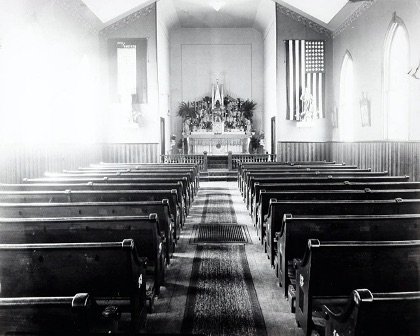ISU history students revisit Spanish Flu pandemic

POCATELLO, Idaho (KIFI/KIDK) – Students taking Idaho History from professor Kevin Marsh had the task of telling the story of Idaho communities during the Spanish Flu pandemic on an interactive, ArcGIS StoryMap for the public.
Marsh said the students dug into records of Idaho newspapers published in the years of 1918-1920 during Spanish Flu pandemic.
"Influenza in Idaho: How the World's Deadliest Pandemic Shaped the Gem State" is available to view HERE. 14 undergraduates and one graduate student teamed together to create this StoryMap using Ersi proprietary software.
As Idaho State University history students poured over digital databases of newspapers this summer, they found that, while some things change, some parts of societies stay the same.
During the Spanish flu pandemic of 1918-1920, schools were closed in communities throughout Idaho, parties were postponed, and community members fought over the importance of quarantine.
A proclamation by the Bannock County Health Board and the Pocatello Health Board published in the Oct. 26, 1918 Pocatello Tribune states: “Owning to the prevalence of influenza, and acting upon instructions of the state board of health, it is further ordered that all outdoor as well as indoor gatherings be prohibited. This includes gatherings of any nature whatsoever.”
The StoryMap documents showed Idaho newspapers during this period had headlines such as “City Closed Against Outside World” and “Young Folks Enjoy Lifting of Quarantine” and public notices saying “Coughs and Sneezes Spread Diseases” and “Use the Handkerchief and Do Your Bit to Protect Me.”
Marsh taught the six-week summer class, Idaho History 4423. Each student contributed in publishing, putting together search terms and procedures to come up with information to tell their stories.
“It was a great research and teaching experience for the students looking at Idaho history in the early 20th century through the lens of an all too familiar experience for us today as we are dealing with this coronavirus pandemic,” Marsh said, “So there are a lot of similarities, but it was also very different as well. For the students, it was a great experience in learning about that pandemic, but it was also a great research experience.”
This is a small example of the active, engaged research program by students across all degree programs in the ISU Department of History.
“Students in their classwork put together something that is a resource for the general public, which is just a win for both sides,” Marsh said, “It gets student work outside of just the classroom, giving students not just the opportunity to develop skills, but to contribute to the larger community.”





